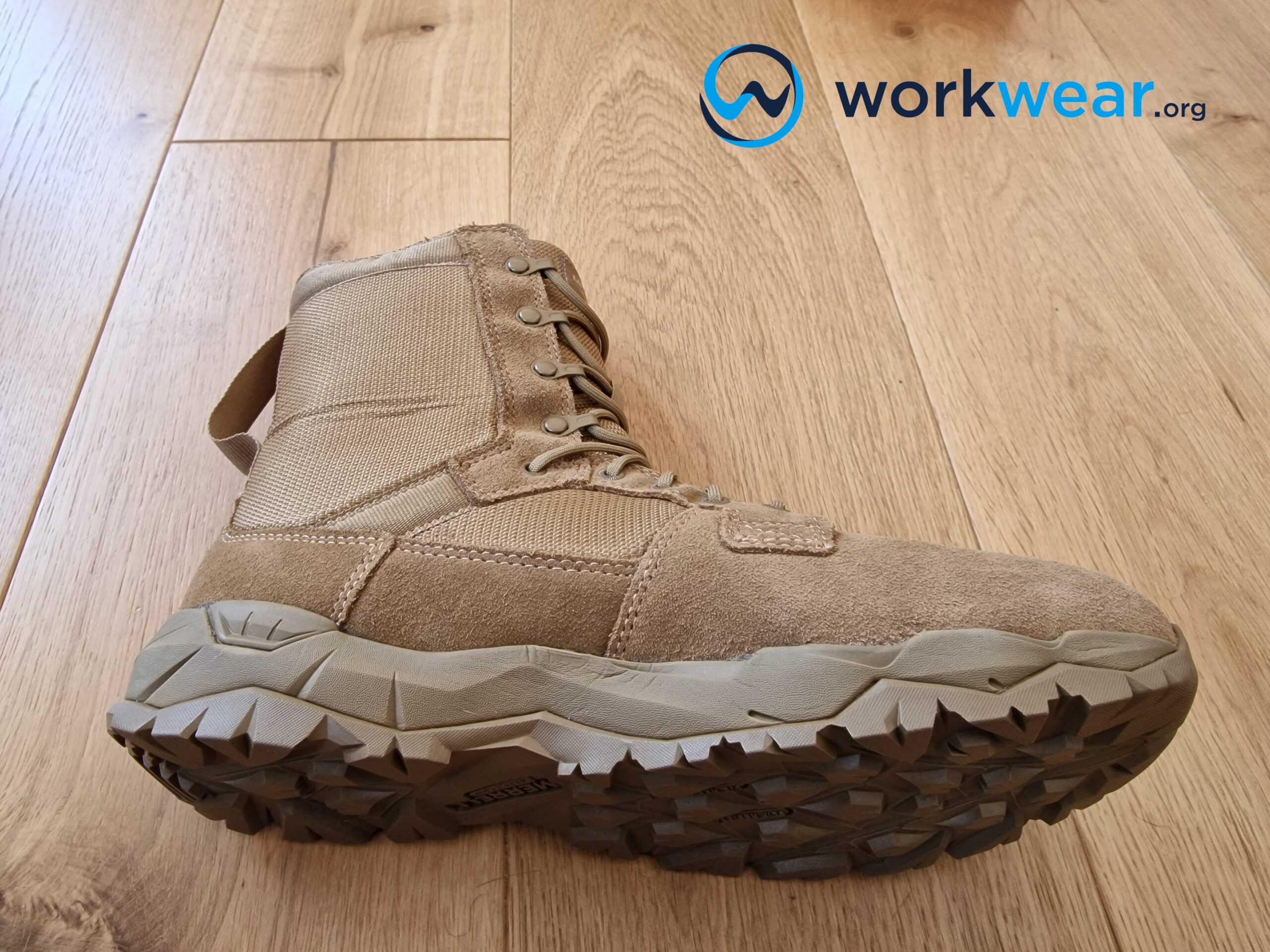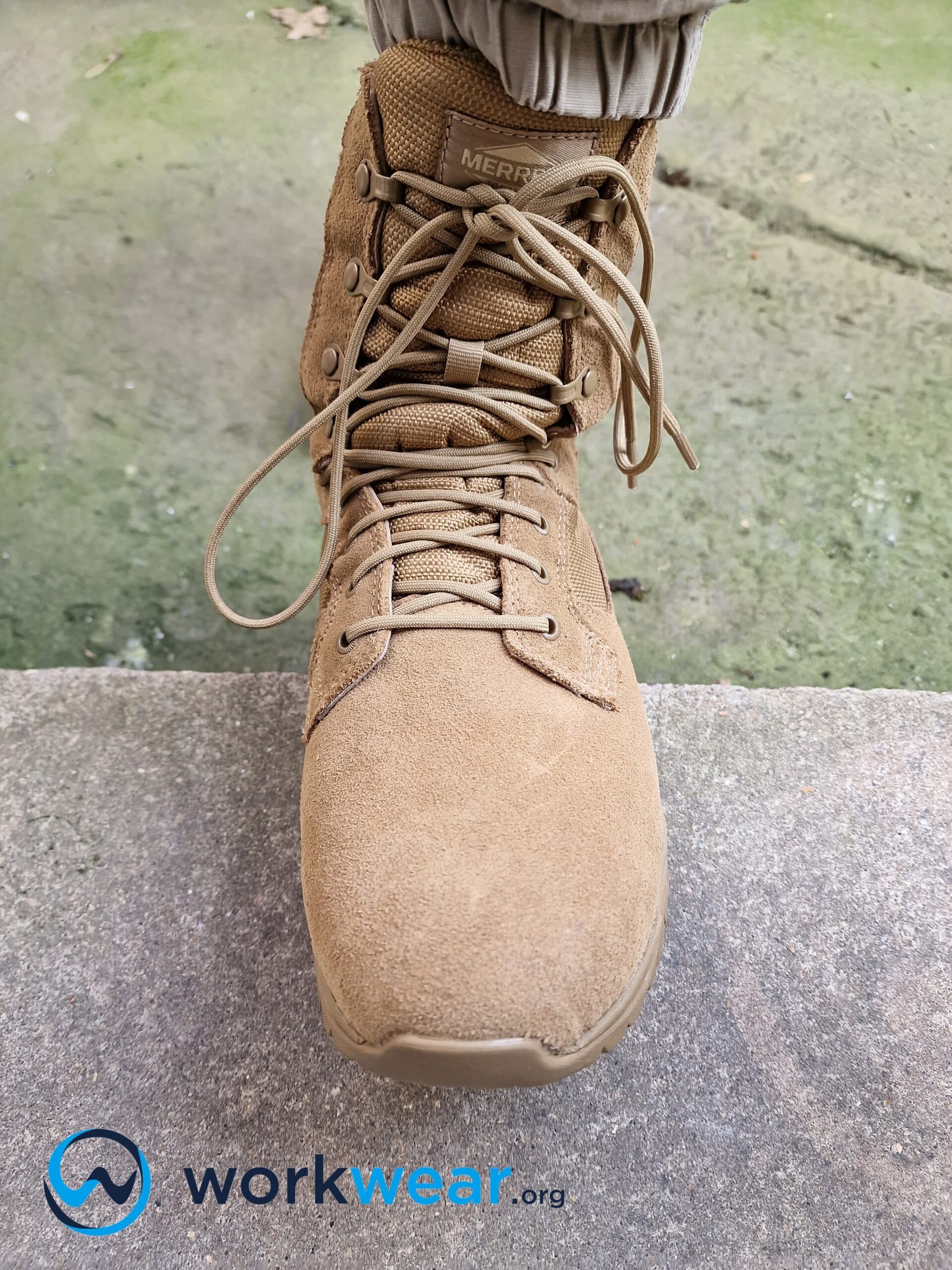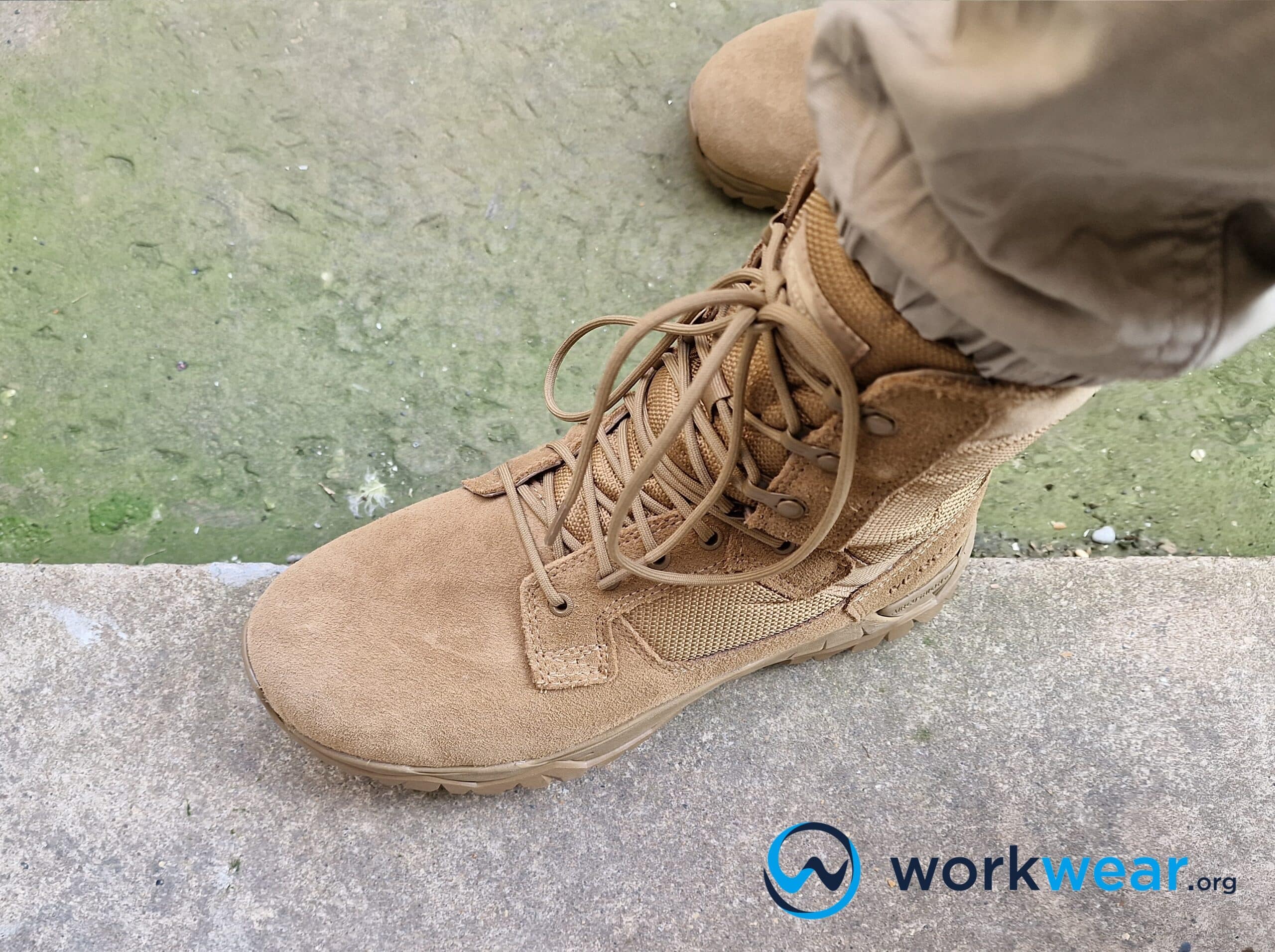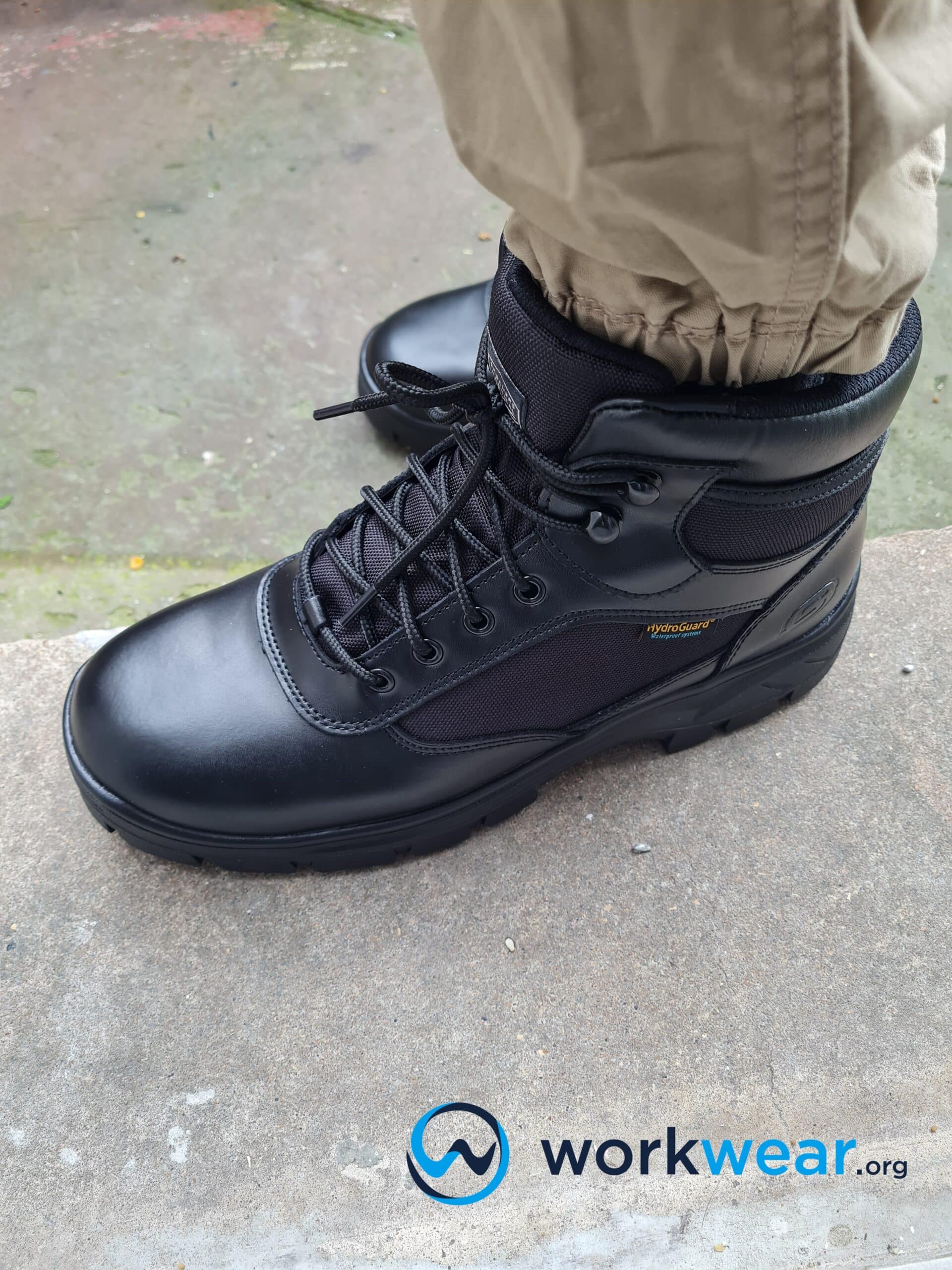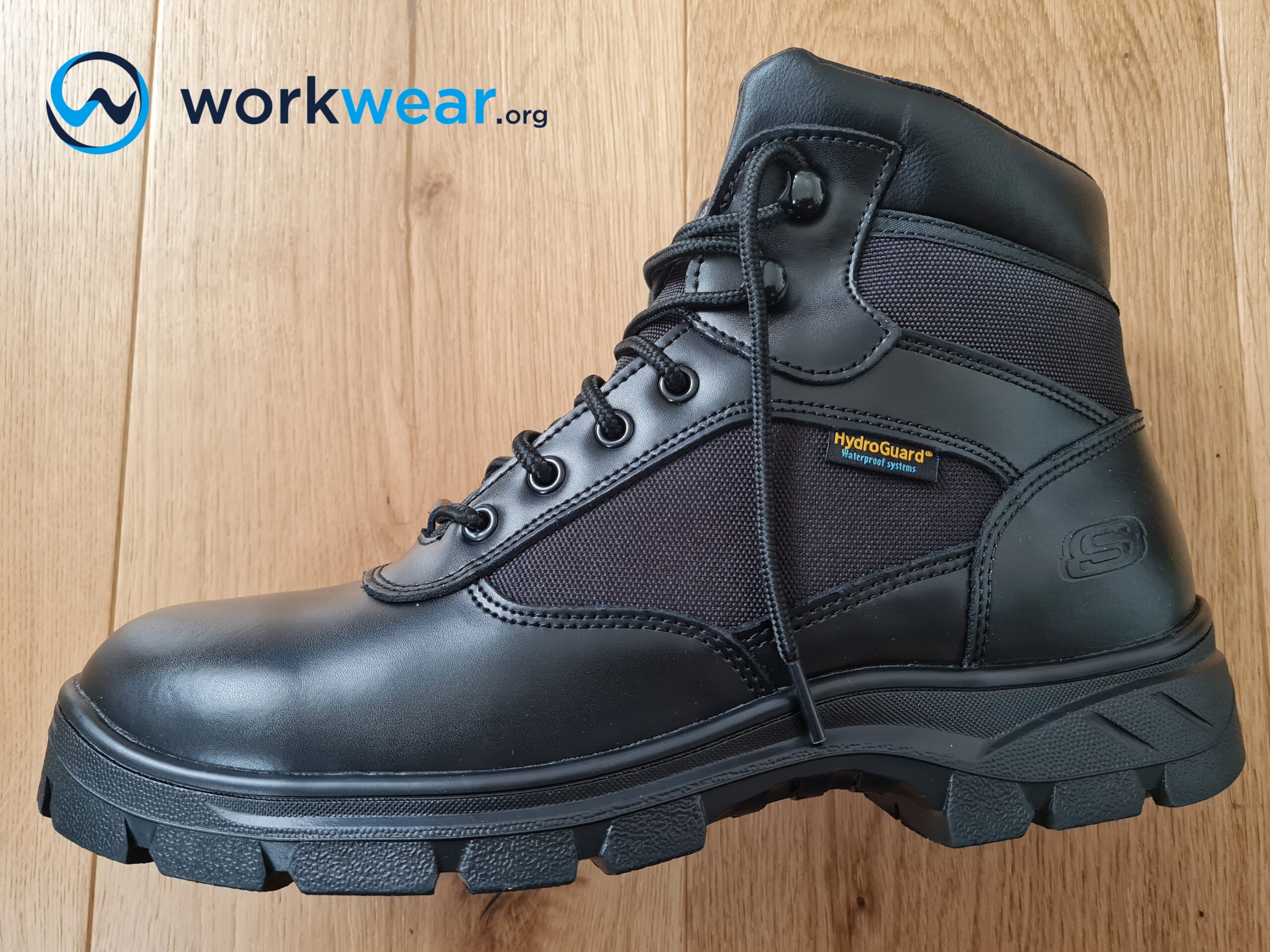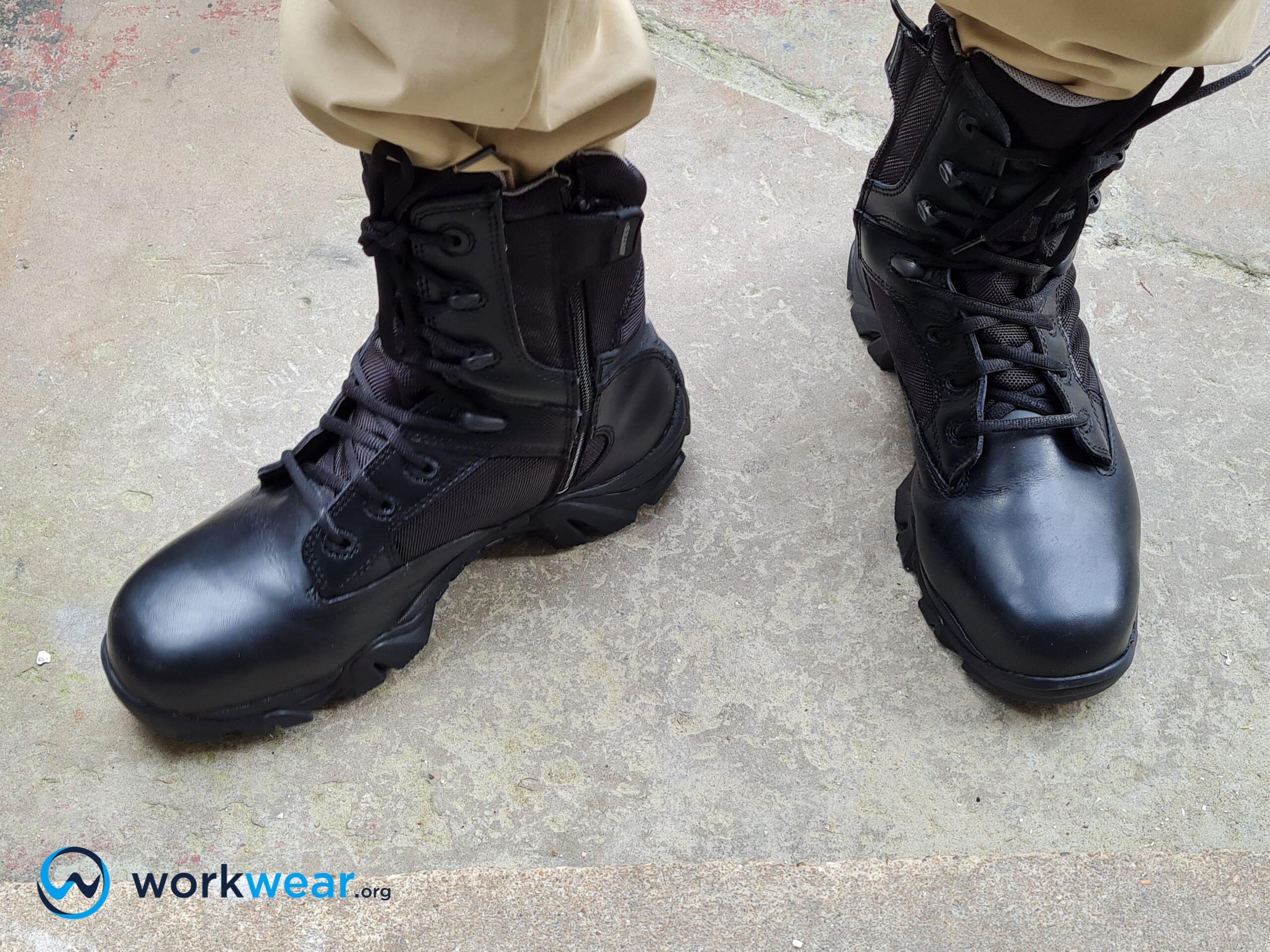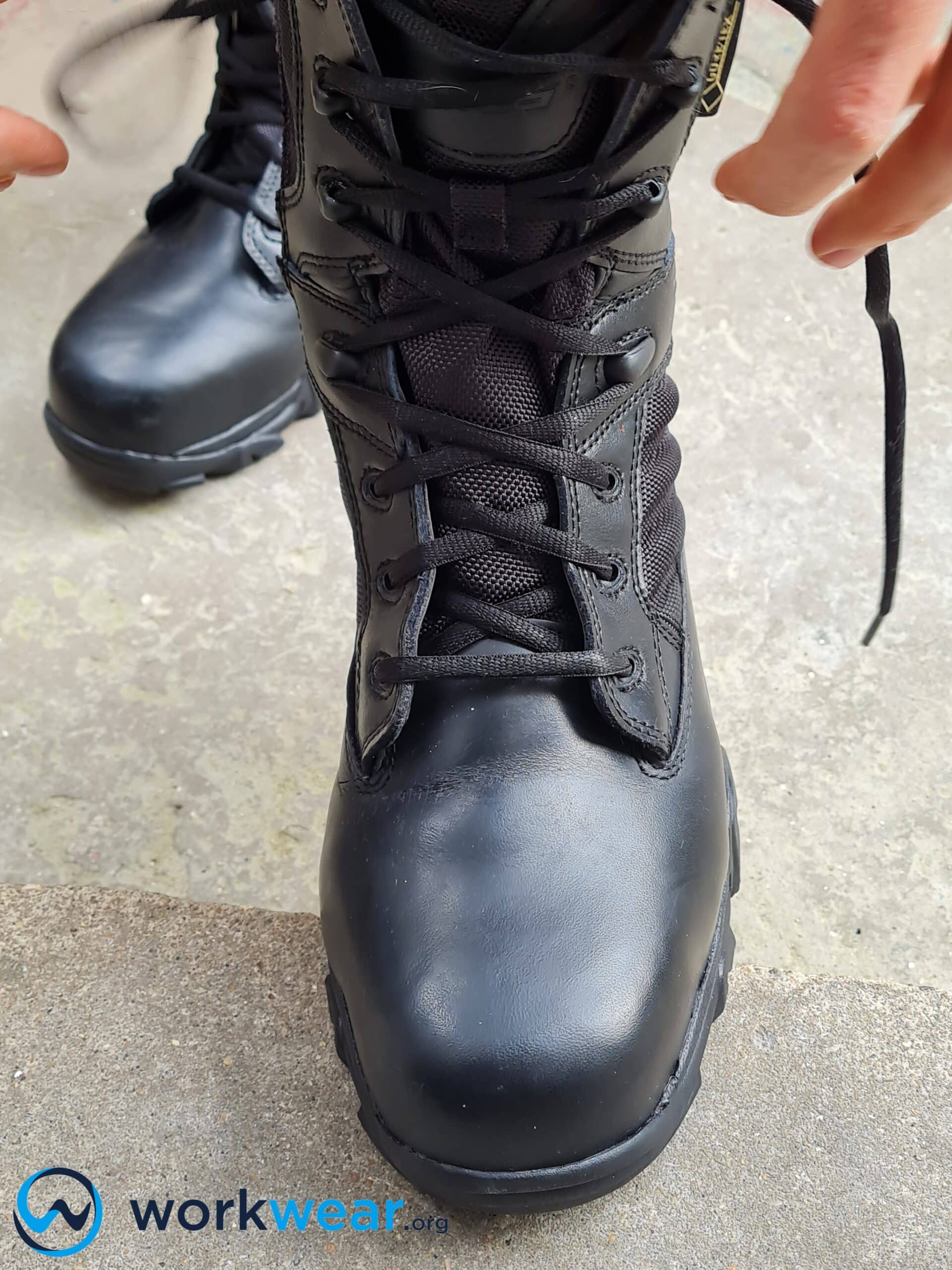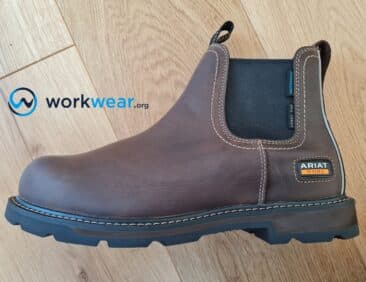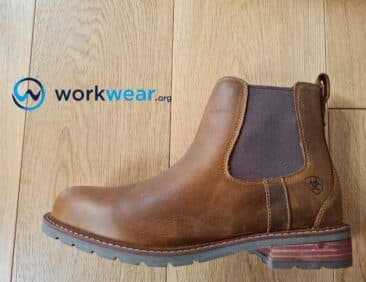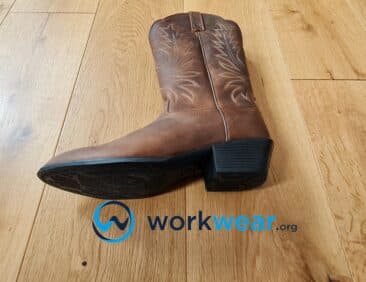Tactical Boots vs Combat Boots Comparison
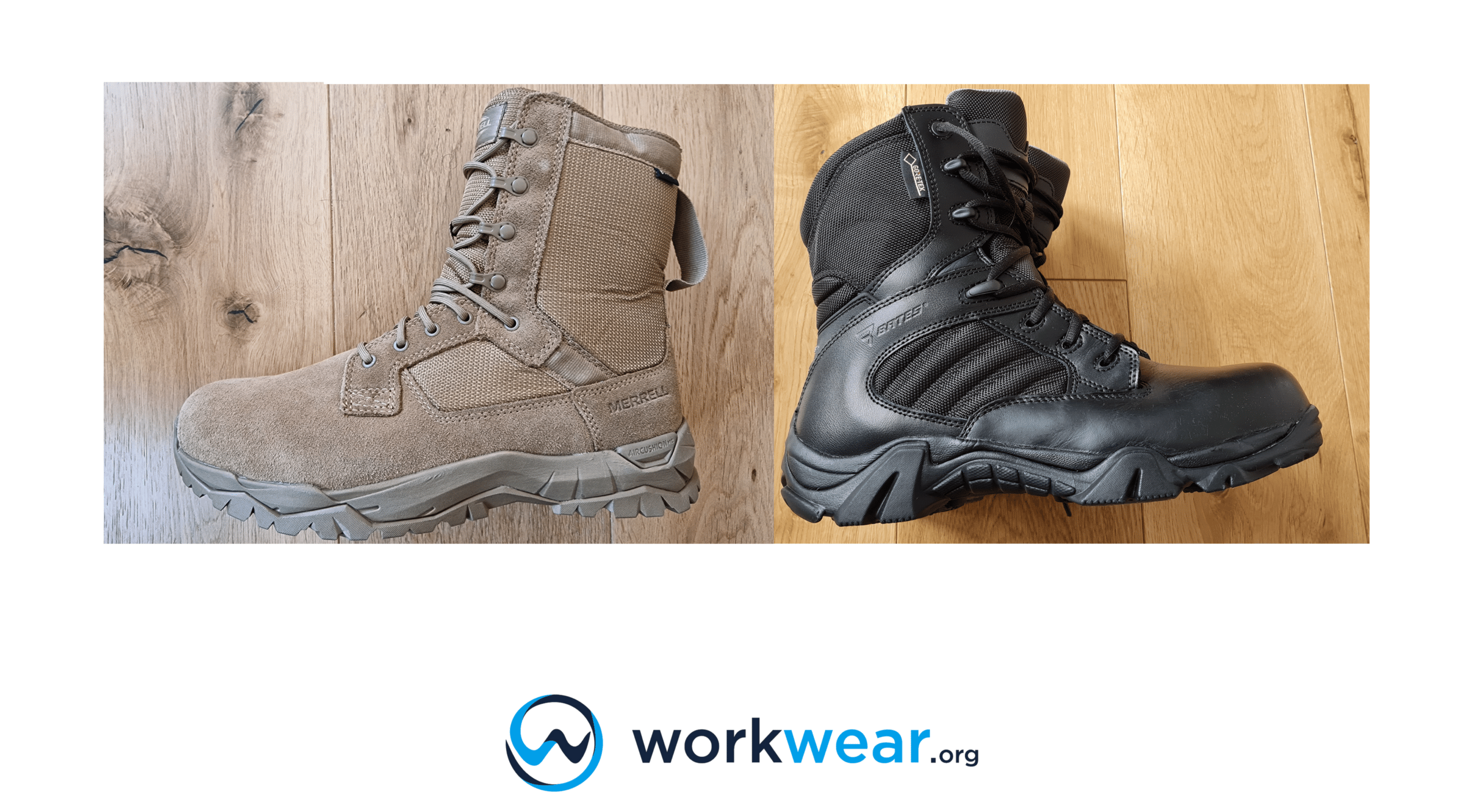
When it comes to work boots, tactical and combat boots are often used interchangeably but based on our experience; they’re not the same thing. “Tactical boots” is a generic term that refers to all types of boots that can be worn in military or duty professions. On the other hand, combat boots are typically used on the field and for combat purposes. In this article, we’ll discuss the differences between these two boot options to help you maximize the full potential of the boots that you’ll eventually choose.
Tactical Boots
At first glance, tactical boots look identical to standard-issue combat boots. In reality, tactical boots feature the silhouette of combat boots but are equipped with some high-performance qualities that are more commonly associated with hiking boots. Some tactical boots even look like tall sneakers, with athletic profiles that look versatile enough to be used on and off the job. Tactical boots are made with strong yet lightweight components designed to promote increased mobility, which is needed for climbing, hiking, or training exercises. In addition, most of these boots showcase high-tech features for improved comfort, so staying upright all day long won’t cause serious discomfort.
Key Advantages of Tactical Boots
Lighter weight
The leather used for tactical boots is typically thinner than the materials used for combat boots’ uppers. This helps keep tactical boots’ weight to a minimum, making them more suitable for prolonged periods of staying upright and walking since they don’t drag heavily on the feet. The reduced weight is also affected by the soles, which are generally thinner than the ones that are fitted into combat boots. However, it’s worth noting that even with the minimized weight, tactical boots still perform remarkably well in the settings for which they’re designed.
Flexible
Tactical boots’ uppers – made of leather, synthetic materials, or a combination of both – are designed to be more flexible than that combat boots. The uppers flex to follow the foot’s action, making it more comfortable and easier to move as no restrictive materials are getting in the way. The same flexibility is typically enjoyed from the bottom of the boots, with less rigid soles for continuously unhampered mobility in varying conditions. This quality offers considerable benefits for activities that require the feet to have a wider range of motion, including training exercises and going up inclined terrains.
Feel cooler
Tactical boots have uppers made with relatively thin leather, allowing more air. This helps prevent the boots from overheating, which is a great risk when using tall boots for long hours, especially in humid or extremely warm conditions. High-quality tactical boots even come with breathable linings and other enhancements (including moisture-wicking materials) to maintain a cool environment for the feet to enjoy while on the job. In addition, some of these boots’ uppers have sections allowing the air to pass, promoting better ventilation to prevent heat from accumulating.
Typically have comfortable cushioning
Most modern tactical boots are equipped with ample cushioning to support the feet while warding off the discomfort of long hours of staying upright or walking around. The padding on the soles protects the feet against being pressed directly into the hard ground conditions that need to be walked on. Meanwhile, cushioning on the other parts of the boot, such as the collar and tongue, prevents painful chafing and improves the secure fit.
More streamlined look
Tactical boots generally have a more streamlined look compared to combat boots. The relatively thin leather uppers more closely follow the curves of the feet and calves, resulting in a sleeker silhouette that doesn’t look and feel too bulky. Many people appreciate this reduced bulk, especially since it makes the boots easier to maximize on and off the job, as they can blend in effortlessly with casual wear.
Key Disadvantages of Tactical Boots
Thinner sole
The soles of tactical boots are often thinner than that of combat boots. This design helps promote increased mobility as the soles are more flexible and respond more quickly to the foot’s movements. However, these soles don’t protect the feet as thick soles do, so the feet will easily feel the hard ground and sharp rocks in rough terrain.
Weaker traction
The flexible soles fitted into tactical boots typically have weaker traction than thick soles. This is because their structures often don’t have the deep, rugged treads that thick soles have, which work to deliver a firm grip on tricky surfaces. In this case, the flexibility of the sole often compromises strong traction, so tactical boots may not feel as grippy as combat boots – and they may not be the best options for maintaining stable footing on extremely slippery or unstable ground conditions.
Not as durable as combat boots
The materials used for tactical boots are geared more toward providing increased mobility, speed, and comfort. While they’re designed to perform remarkably well for greater agility and with less bulk, they generally aren’t as durable as combat boots. Their materials may not be as strong, so tactical boots don’t have the durability of combat boots that can withstand exceptionally challenging surroundings.
Uses of Tactical Boots
Tactical boots with lightweight profiles are best suited for conditions that require a lot of movement over long periods, such as those that the following professionals experience:
- Military personnel
- Security professionals
- Law enforcement officers
- Hunters
- Hikers
Combat Boots
Combat boots have a tall height that makes them look almost identical to tactical boots. However, combat boots have more aggressive looks as they’re built for more demanding conditions and activities – such as those experienced in combat and while walking through extremely unstable or slippery ground conditions. In addition, the materials of combat boots are designed to hold up remarkably well with heavy use in tough environments, ensuring long-lasting functionality while keeping the feet completely protected inside.
Key Advantages of Combat Boots
Durable construction
Combat boots showcase remarkably strong structures that withstand the heavy beating of regular use in the toughest settings. They’re designed to resist abrasion and other threats in the field and other challenging work areas. Their structures are much stronger and last longer compared to tactical boots.
Thicker upper material
The thick material of combat boots offers increased strength and enhanced protection against safety hazards in challenging outdoor environments. Unlike tactical boots with thinner materials for better flexibility and mobility, combat boots are constructed with robust uppers that create barriers against external threats. These thick uppers help protect the feet, ankles, and lower leg from being harmed by sharp branches, animal bites, and extreme wetness in potentially hazardous settings.
Strong traction
Combat boots often have thick, heavy-duty soles that keep the feet firmly, even on tricky surfaces. These soles feature deep treads that bite powerfully into the ground to make it easier to maintain secure footing even in the roughest terrains. The strong traction helps stabilize the footing, so walking quickly to respond to tense situations can be done without sacrificing safety, especially while navigating extremely slippery or unsteady ground conditions.
Safety enhancements
Combat boots are designed for use in combat and other physically taxing activities in the most difficult settings, so it’s not surprising that they’re fitted with safety enhancements more often than tactical boots. For example, the boots may come with safety toe caps to shield the feet against dangerous compression and impact. Meanwhile, some combat boots are built with puncture-resistant soles to protect against piercing injuries from sharp objects that can be stepped on.
Ankle support
The thick material of combat boots’ uppers protects the feet while simultaneously keeping them in a secure position. Combat boots may also come with heel counters that stabilize the heels, preventing the feet from sliding from their proper place, which can lead to unstable steps, especially with lateral movements or while navigating tricky terrains.
Key Disadvantages of Combat Boots
Heavy
With the sturdy materials used in combat boots, it’s almost a given that they turn out to be much heavier than tactical boots. The considerable weight can help stabilize footing but will bring great discomfort when the boots are worn for long periods. The heaviness can also make certain movements difficult to manage, especially for those who aren’t used to the bulk of heavy-duty combat boots.
Not very flexible
The thick leather that’s often used in combat boots protects the feet against the elements and abrasion, but it can feel unbearably stiff, digging into the feet with every step so the movements can cause pain before long. Meanwhile, the heavy-duty rubber soles that are fitted into combat boots offer strong traction. Still, they’re far from being flexible, restricting movement from the bottom of the footwear so it can be awkward and even uncomfortable to walk for hours.
Can overheat
The heavy-duty leather uppers that prevent debris and wetness from entering also stop the air from getting into the boot. This makes heat to build-up inside the boots easier, especially when used for long shifts. In addition, the thickness of the material increases the risk of overheating even more by not allowing moisture and heat to escape, so the interior can feel uncomfortably hot when the boots are used in hot or humid conditions for extended times.
Uses of Combat Boots
Combat boots are designed to maintain their high-performance features in tough conditions while doing physically taxing activities, such as the ones that are associated with the following jobs:
- Armed forces personnel
- Soldiers during combat
Tactical Boots vs Combat Boots – Comparison
| Boot Type |
Pros |
Cons |
|---|---|---|
| Tactical Boots |
|
|
| Combat Boots |
|
|
Our Testing Experience
We’ve tried quite a few tactical boots that stood out with features that can make entire shifts much easier to get through. The Reebok Sublite Cushion RB806 8-Inch Tactical Boot is a clear winner, with a cushioned interior that comfortably cradles the foot, a waterproof upper sealing out wetness, and electrical hazard protection for an added layer of safety while on the job. Meanwhile, the Merrell Moab 2 8-Inch Tactical Response Boot also has a waterproof design to keep the foot dry in wet surroundings, has a grippy sole, and is exceptionally comfortable – thanks to ample cushioning and a breathable lining. The Under Armour Micro G Valsetz Leather Waterproof Tactical Boot stands out with a silhouette that gives off a tall sneaker vibe while also showcasing high-performance qualities, including a waterproof design, shock absorption, and a TPU toe cap. All these boots feel comfortable enough to be worn for long periods. They are built to support almost effortless mobility, so agile movements aren’t difficult to manage during the most critical times of the workday.
Conclusion
Tactical and combat boots are often thought to refer to the same thing, but each has its merits and downsides. Tactical boots are lighter in weight and feel cooler compared to combat boots. They typically come with comfortable cushioning, are flexible, and have a streamlined look – but they’re not as durable as combat boots and have relatively thin soles that don’t have an exceptionally strong grip. On the other hand, combat boots are known for their durable construction, thick uppers, strong traction, and ankle support, and they can come with safety enhancements as well. However, their heavy-duty structures are often heavy, inflexible, and tend to overheat with long hours of continuous use. Therefore, it’s important to distinguish between combat boots and tactical boots to determine each option’s best features and drawbacks, allowing you to maximize the chosen footwear to its full potential.
FAQs
- Can tactical boots be used for jobs or activities other than military or law enforcement?’
- Yes. Tactical boots with tall structures will benefit hunters who can enjoy extended coverage against abrasive materials, small critters, and other threats encountered while spending a lot of time outdoors. Tactical boots often have sporty profiles that are ideal for hikers, as they can move more easily and quickly, given the boots’ minimized weight and flexible design.
- Is leather the best material for tactical boots and combat boots?
- Not always. While leather offers superior strength and resistance to damage, there are conditions where synthetic materials may function better. For example, in extremely warm environments, leather tactical or combat boots are more susceptible to overheating (unless they have a dedicated cooling system). On the other hand, synthetic materials can let in more air while allowing moisture and heat to dissipate, keeping the boot interior cool and comfortable for longer.
- Can black tactical or combat boots be used for military duty?
- No – for compliance with the regulations for footwear for military use, combat boots or tactical boots must come in either coyote tan or tan.
- Is it okay to wear combat boots or tactical boots with casual (non-uniform) wear?
- Yes – more people are now using tactical boots and combat boots as fashion pieces that add an interesting dimension to outfits. The boots inject a bold or rebellious statement, and with most of these boots fitted with comfort features, they’re considered fashionable and convenient enough to use off-duty.
